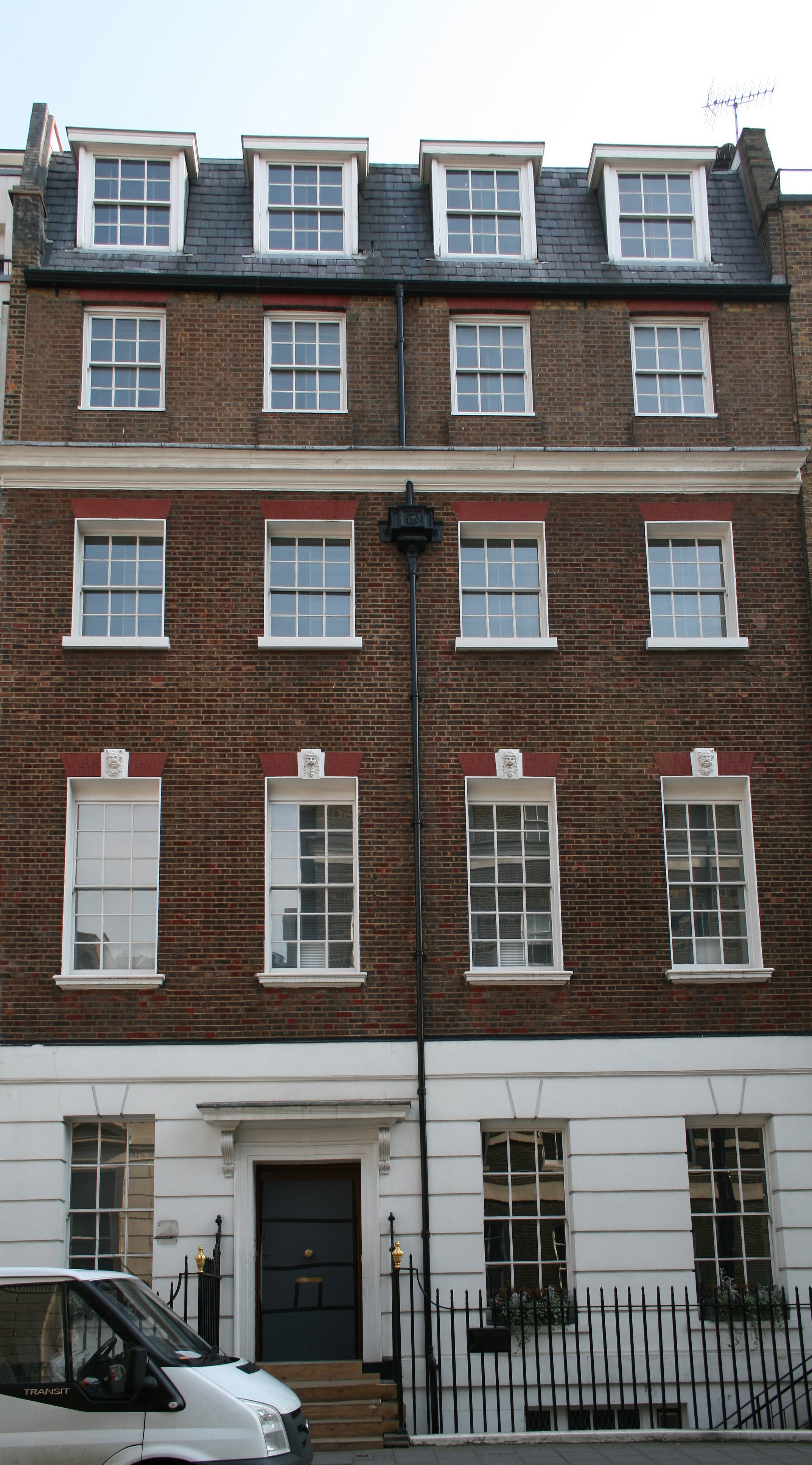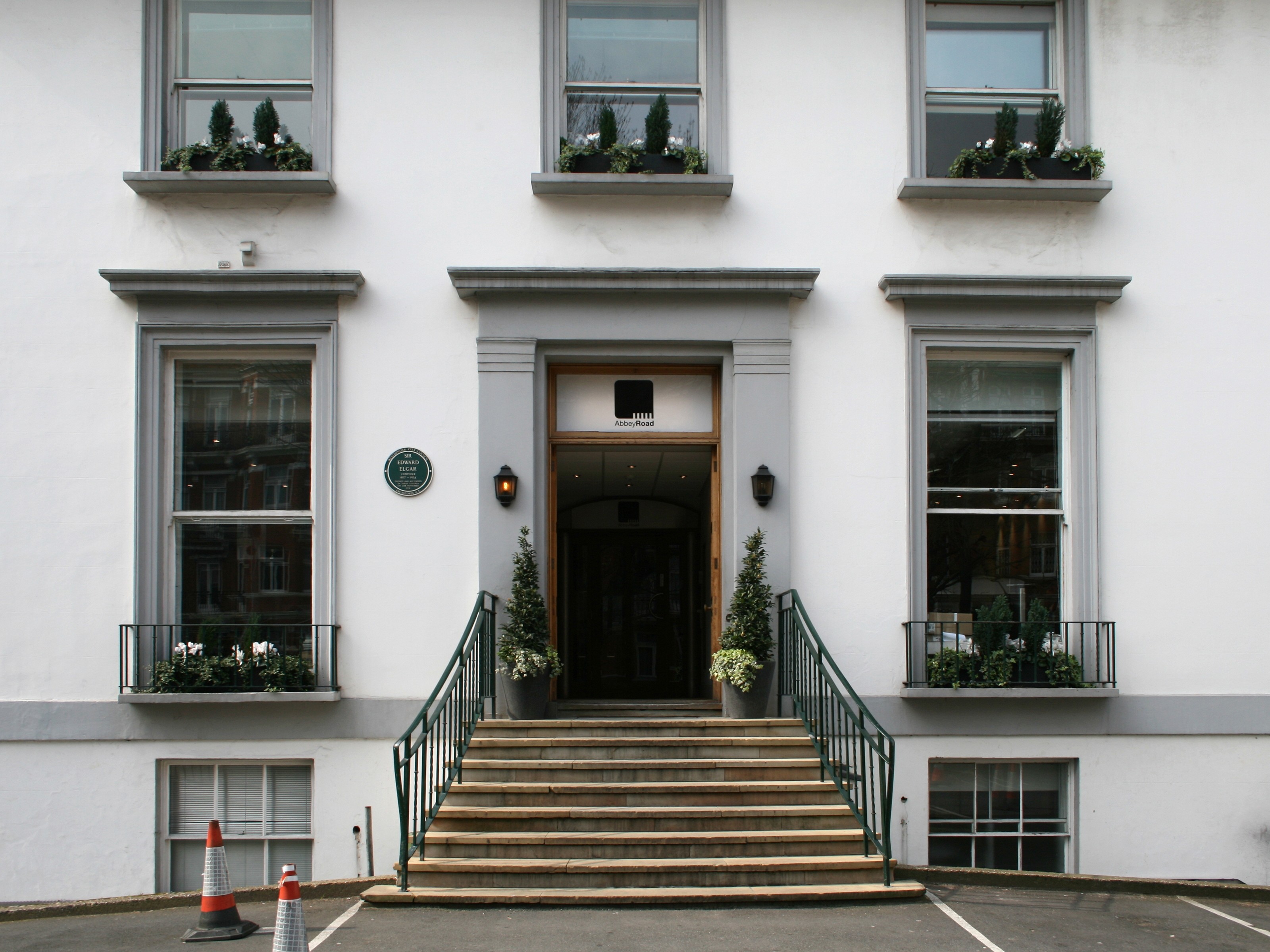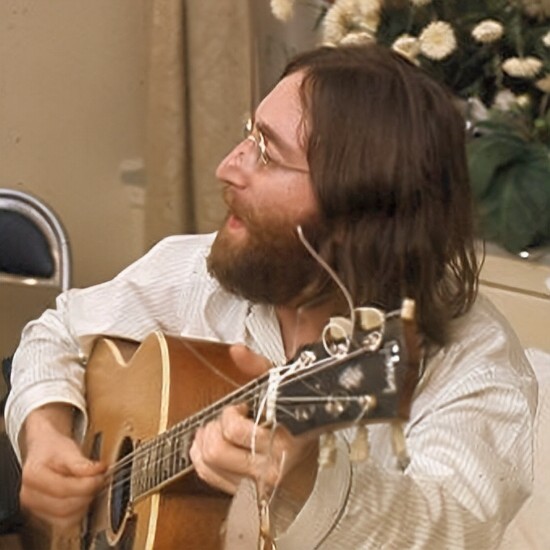|
Sing One For The Lord
"Sing One for the Lord" is a song by American soul musician Billy Preston that was released in September 1970 on his Apple Records album '' Encouraging Words''. It was written by George Harrison and Preston. Although the pair frequently collaborated as recording artists from 1969 onwards, it is their only formal songwriting collaboration. The song is in the gospel style and was written in praise of the two musicians' respective deities. "Sing One for the Lord" was one of the first songs that Preston and Harrison worked on together, following Preston's participation in the Beatles' ''Let It Be'' sessions in January 1969 and his signing to the band's Apple label. An early mix of the track was made on February 13 that year, but the song was omitted from Preston's 1969 album '' That's the Way God Planned It''. The recording was completed in January 1970 when the Edwin Hawkins Singers overdubbed a gospel chorus at Olympic Sound Studios in London. Composition and recording "Sing One ... [...More Info...] [...Related Items...] OR: [Wikipedia] [Google] [Baidu] |
Billy Preston
William Everett Preston (September 2, 1946 – June 6, 2006) was an American keyboardist, singer and songwriter whose work encompassed R&B, rock, soul, funk, and gospel. Preston was a top session keyboardist in the 1960s, during which he backed artists such as Little Richard, Sam Cooke, Ray Charles, the Everly Brothers, Reverend James Cleveland, the Beatles and the Rolling Stones. He gained attention as a solo artist with hit singles such as " That's the Way God Planned It", the Grammy-winning " Outa-Space", " Will It Go Round in Circles", "Space Race", " Nothing from Nothing", and " With You I'm Born Again". Additionally, Preston co-wrote " You Are So Beautiful", which became a #5 hit for Joe Cocker. Preston is the only non-Beatle musician to be given a credit on a Beatles recording at the band's request; the group's 1969 single "Get Back" was credited as "The Beatles with Billy Preston". He continued to record and perform with George Harrison after the Beatles' brea ... [...More Info...] [...Related Items...] OR: [Wikipedia] [Google] [Baidu] |
Let It Be (film)
''Let It Be'' is a 1970 British documentary film starring the Beatles and directed by Michael Lindsay-Hogg. The film documents the group's rehearsing and recording songs in January 1969 for what was to become their twelfth and final studio album '' Let It Be''. The film includes an unannounced rooftop concert by the group, the last public performance of the four together. The film was originally planned as a television documentary that would accompany a concert broadcast. When plans for the concert broadcast were dropped, the project became a feature film production. Although the film does not dwell on the dissension within the group at the time, it provides some glimpses into the dynamics that would lead to their break-up. After the film's release, John Lennon, Paul McCartney, George Harrison and Ringo Starr won an Academy Award for Best Original Song Score. The film ''Let It Be'' has not been officially available on home video since the 1980s, although original and bootleg ... [...More Info...] [...Related Items...] OR: [Wikipedia] [Google] [Baidu] |
My Sweet Lord
"My Sweet Lord" is a song by English musician George Harrison, released in November 1970 on his triple album '' All Things Must Pass''. It was also released as a single, Harrison's first as a solo artist, and topped charts worldwide; it was the biggest-selling single of 1971 in the UK. In America and Britain, the song was the first number-one single by an ex- Beatle. Harrison originally gave the song to his fellow Apple Records artist Billy Preston to record; this version, which Harrison co-produced, appeared on Preston's '' Encouraging Words'' album in September 1970. Harrison wrote "My Sweet Lord" in praise of the Hindu god Krishna, while intending the lyrics as a call to abandon religious sectarianism through his blending of the Hebrew word '' hallelujah'' with chants of " Hare Krishna" and Vedic prayer. The recording features producer Phil Spector's Wall of Sound treatment and heralded the arrival of Harrison's slide guitar technique, which one biographer described as ... [...More Info...] [...Related Items...] OR: [Wikipedia] [Google] [Baidu] |
All Things Must Pass
''All Things Must Pass'' is the third studio album by English rock musician George Harrison. Released as a triple album in November 1970, it was Harrison's first solo work after Break-up of the Beatles, the break-up of the Beatles in April that year. It includes the hit singles "My Sweet Lord" and "What Is Life", as well as songs such as "Isn't It a Pity" and All Things Must Pass (song), the title track that had been overlooked for inclusion on releases by the Beatles. The album reflects the influence of Harrison's musical activities with artists such as Bob Dylan, the Band, Delaney & Bonnie and Friends and Billy Preston during 1968–70, and his growth as an artist beyond his supporting role to former bandmates John Lennon and Paul McCartney. ''All Things Must Pass'' introduced Harrison's signature slide guitar sound and the spiritual themes present throughout his subsequent solo work. The original vinyl release consisted of two LP record, LPs of songs and a third disc of inform ... [...More Info...] [...Related Items...] OR: [Wikipedia] [Google] [Baidu] |
Allen Klein
Allen Klein (December 18, 1931 July 4, 2009) was an American businessman whose aggressive negotiation tactics affected industry standards for compensating recording artists. He founded ABKCO Music & Records Incorporated. Klein increased profits for his musician clients by negotiating new record company contracts. He first scored monetary and contractual gains for Buddy Knox and Jimmy Bowen, one-hit rockabillies of the late 1950s, then parlayed his early successes into a position managing Sam Cooke, and eventually managed the Beatles and the Rolling Stones simultaneously, along with many other artists, becoming one of the most powerful individuals in the music industry during his era. Rather than offering financial advice and maximizing his clients' income, as a business manager normally would, Klein set up what he called "buy/sell agreements" where a company that Klein owned became an intermediary between his client and the record label, owning the rights to the music, manuf ... [...More Info...] [...Related Items...] OR: [Wikipedia] [Google] [Baidu] |
I've Got A Feeling
"I've Got a Feeling" is a song by the English rock band the Beatles from their 1970 album ''Let It Be''. It was recorded on 30 January 1969 during the Beatles' rooftop concert. It is a combination of two unfinished songs: Paul McCartney's "I've Got a Feeling" and John Lennon's "Everybody Had a Hard Year". The song features Billy Preston on electric piano. A studio take of the song, recorded about a week earlier, was released on the '' Anthology 3'' compilation in 1996. The 2003 remix album '' Let It Be... Naked'' includes a version of the song that is a composite edit of the rooftop concert take used on ''Let It Be'' and a second attempt at the song from the same concert. With Lennon's vocals isolated out during the production of Peter Jackson's ''Get Back'' documentary, McCartney performed the song live as a virtual duet on his 2022 Got Back tour. Composition Lennon's song was a litany where every line started with the word "everybody". The song had been recorded twice before ... [...More Info...] [...Related Items...] OR: [Wikipedia] [Google] [Baidu] |
The Beatles' Break-up
From August 1962 to September 1969, the Beatles had a lineup that consisted of John Lennon, Paul McCartney, George Harrison and Ringo Starr. Their break-up was a cumulative process attributed to numerous factors. These include the strain of the Beatlemania phenomenon, the death of manager Brian Epstein in 1967, resentment towards McCartney from his bandmates for his perceived domineering, Lennon's heroin use and his relationship with Yoko Ono, Harrison's increasingly prolific songwriting output, the floundering of Apple Corps and the ''Get Back'' project (later renamed ''Let It Be'' in 1970) as well as managerial disputes. During the latter half of the 1960s, the members began to assert individual artistic agendas. Their disunity became most evident on ''The Beatles'' (also known as "the White Album", 1968), and quarrels and disharmony over musical matters soon permeated their business discussions. Starr left the group for two weeks during the White Album sessions, and Harriso ... [...More Info...] [...Related Items...] OR: [Wikipedia] [Google] [Baidu] |
Tanpura
The tanpura (), also referred to as tambura and tanpuri, is a long-necked plucked string instrument, originating in India, found in various forms in Indian music. It does not play melody, but rather supports and sustains the melody of another instrument or singer by providing a continuous harmonic bourdon or drone. A tanpura is not played in rhythm with the soloist or percussionist: as the precise timing of plucking a cycle of four strings in a continuous loop is a determinant factor in the resultant sound, it is played unchangingly during the complete performance. The repeated cycle of plucking all strings creates the sonic canvas on which the melody of the raga is drawn. The combined sound of all strings–each string a fundamental tone with its own spectrum of overtones–supports and blends with the external tones sung or played by the soloist. Hindustani musicians favour the term ''tanpura'' whereas Carnatic musicians say ''tambura''; ''tanpuri'' is a smaller va ... [...More Info...] [...Related Items...] OR: [Wikipedia] [Google] [Baidu] |
Arpeggio
A broken chord is a chord broken into a sequence of notes. A broken chord may repeat some of the notes from the chord and span one or more octaves. An arpeggio () is a type of broken chord, in which the notes that compose a chord are played or sung in a rising or descending order. An arpeggio may also span more than one octave. Being an Italian noun, its plural is ''arpeggi''. The word ''arpeggio'' comes from the Italian word ''arpeggiare'', which means ''to play on a harp''. Even though the notes of an arpeggio are not played or sung all together at the same time, listeners hear the sequence of notes as forming a chord. When an arpeggio also contains passing tones that are not part of the chord, different music theorists may analyze the same musical excerpt differently. Arpeggios enable composers writing for monophonic instruments that play one note at a time (e.g., flute, saxophone, trumpet), to voice chords and chord progressions in musical pieces. Arpeggios and bro ... [...More Info...] [...Related Items...] OR: [Wikipedia] [Google] [Baidu] |
Hammond Organ
The Hammond organ is an electric organ invented by Laurens Hammond and John M. Hanert and first manufactured in 1935. Multiple models have been produced, most of which use sliding #Drawbars, drawbars to vary sounds. Until 1975, Hammond organs generated sound by creating an electric current from rotating a metal tonewheel near an electromagnetic pickup, and then strengthening the signal with an Power amplifier, amplifier to drive a speaker enclosure, speaker cabinet. The organ is commonly used with the Leslie speaker. Around two million Hammond organs have been manufactured. The organ was originally marketed by the Hammond Organ Company to Church (building), churches as a lower-cost alternative to the wind-driven pipe organ, or instead of a piano. It quickly became popular with professional jazz musicians in organ trios—small groups centered on the Hammond organ. Jazz club owners found that organ trios were cheaper than hiring a big band. Jimmy Smith (musician), Jimmy Smith's ... [...More Info...] [...Related Items...] OR: [Wikipedia] [Google] [Baidu] |
Piano Concerto In A Minor
The Piano Concerto in A minor, Op. 16, composed by Edvard Grieg in 1868, was the only concerto Grieg completed. It is one of his most popular works and is among the most popular of the genre. Structure The concerto is in three movements: Performance time of the whole concerto is usually about 30 minutes. Instrumentation Grieg scored the concerto for solo piano, 2 flutes, 2 oboes, 2 clarinets (in A and B), 2 bassoons, 2 horns in E and E, 2 trumpets in C and B, 2 trombones, tuba, timpani and strings (violins, violas, cellos and double basses). He later added 2 horns and changed the tuba to a third trombone. History and influences The work is among Grieg's earliest important works, written by the 24-year-old composer in 1868 in Søllerød, Denmark, during one of his visits there to benefit from the climate. The concerto is often compared to the Piano Concerto of Robert Schumann: it is in the same key; the opening descending flourish on the piano is similar; the overa ... [...More Info...] [...Related Items...] OR: [Wikipedia] [Google] [Baidu] |
Edvard Grieg
Edvard Hagerup Grieg ( , ; 15 June 18434 September 1907) was a Norwegian composer and pianist. He is widely considered one of the foremost Romantic era composers, and his music is part of the standard classical repertoire worldwide. His use of Norwegian folk music in his own compositions brought the music of Norway to fame, as well as helping to develop a national identity, much as Jean Sibelius did in Finland and Bedřich Smetana in Bohemia. Grieg is the most celebrated person from the city of Bergen, with numerous statues which depict his image, and many cultural entities named after him: the city's largest concert building (Grieg Hall), its most advanced music school ( Grieg Academy) and its professional choir (Edvard Grieg Kor). The Edvard Grieg Museum at Grieg's former home Troldhaugen is dedicated to his legacy. Background Edvard Hagerup Grieg was born in Bergen, Norway (then part of Sweden–Norway). His parents were Alexander Grieg (1806–1875), a merchant and t ... [...More Info...] [...Related Items...] OR: [Wikipedia] [Google] [Baidu] |






.jpg)
